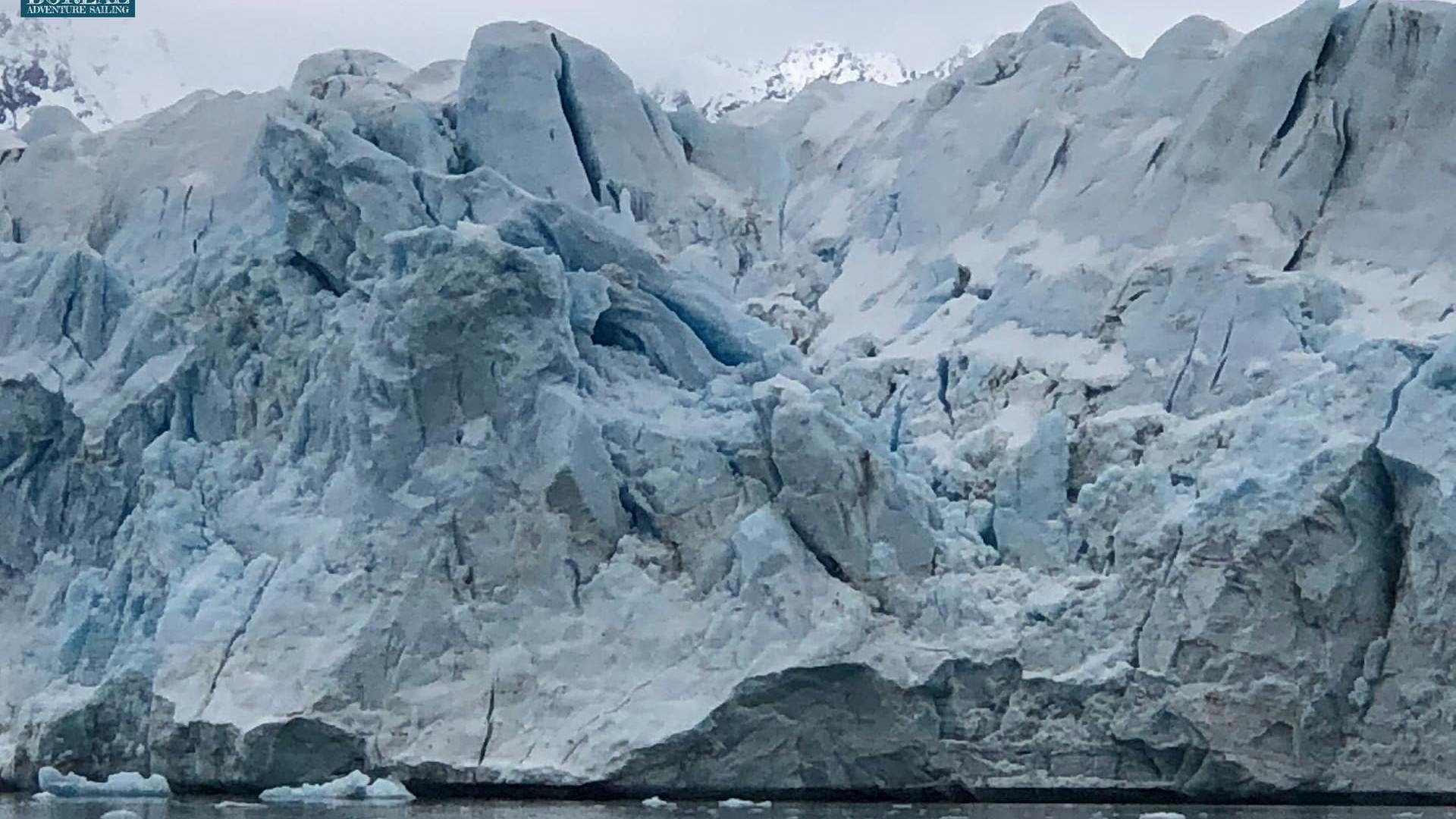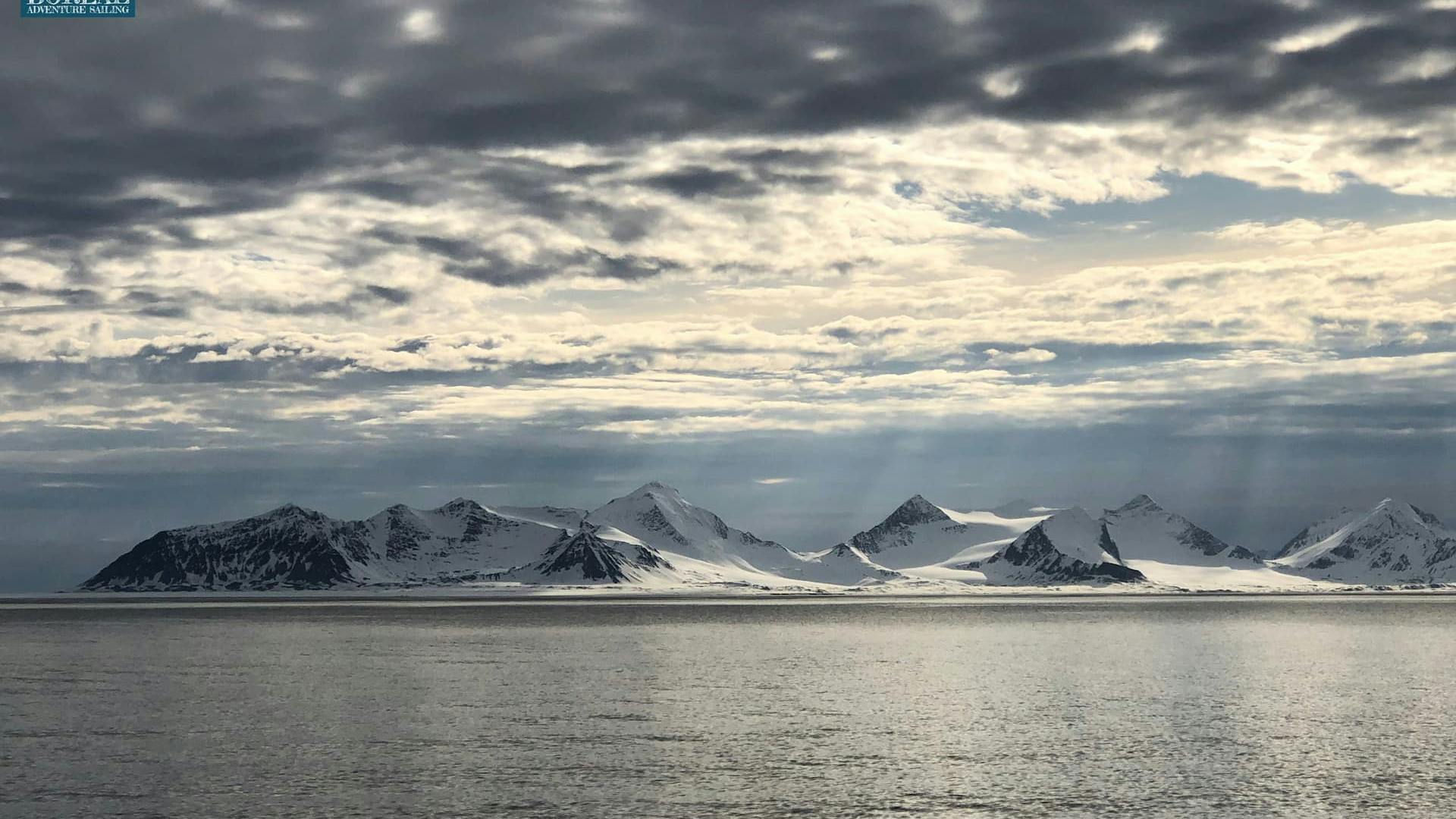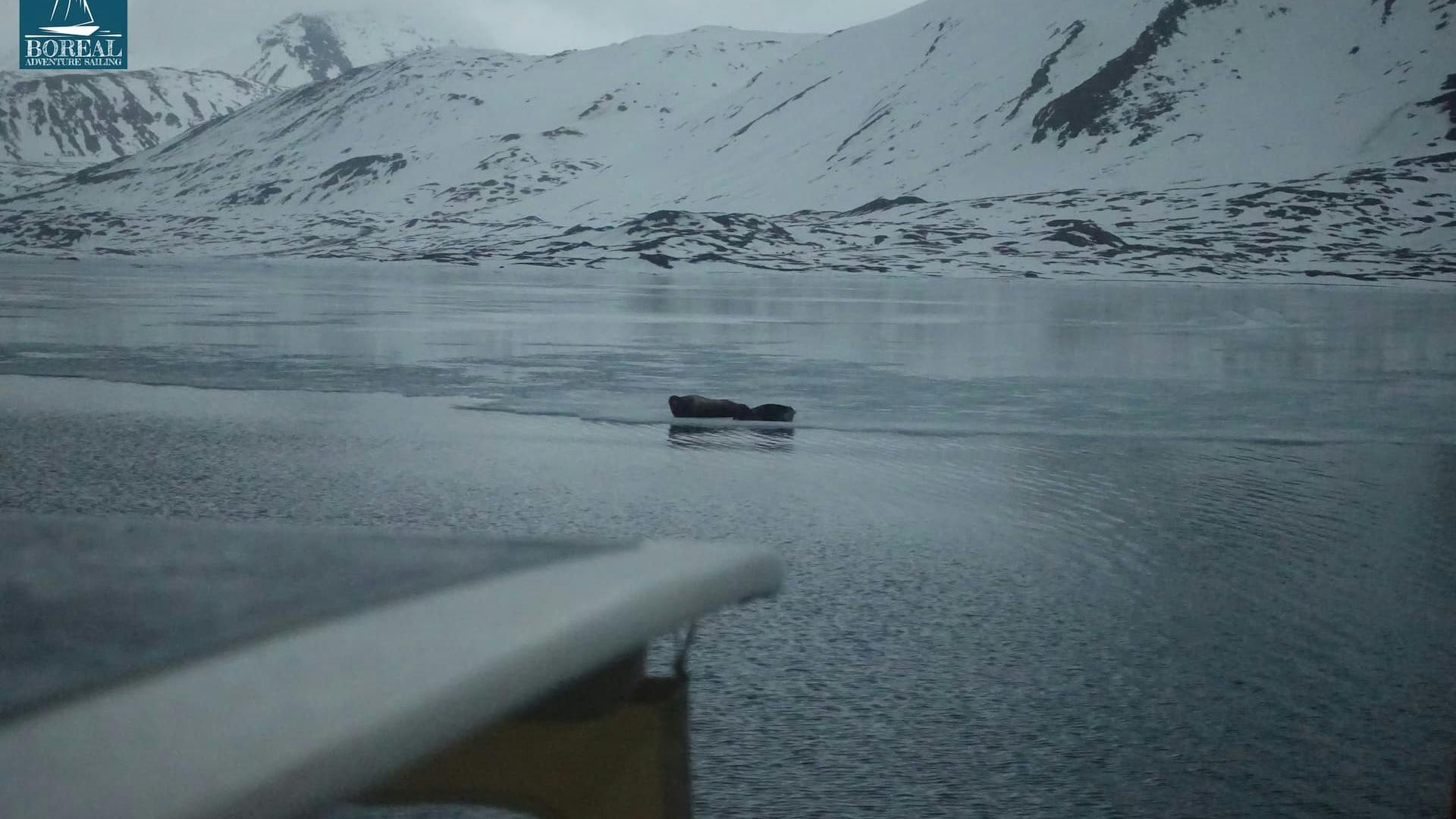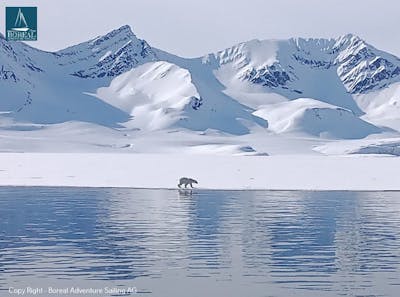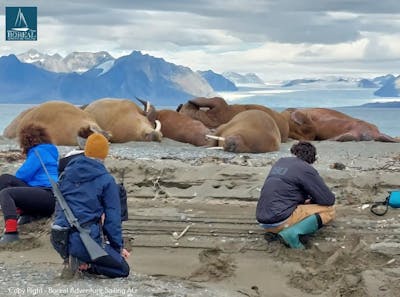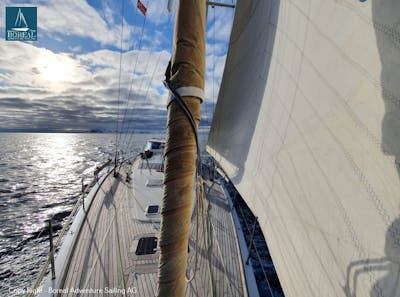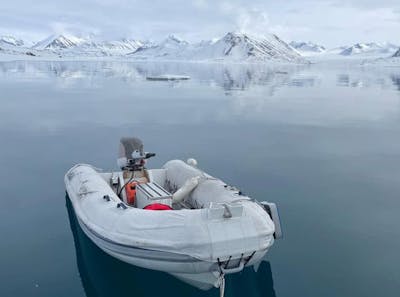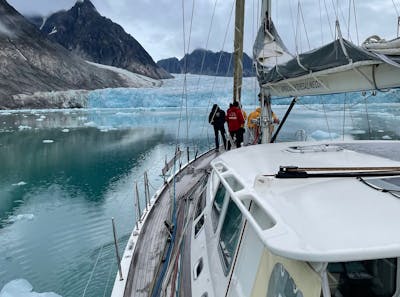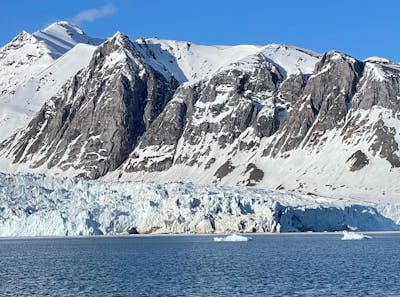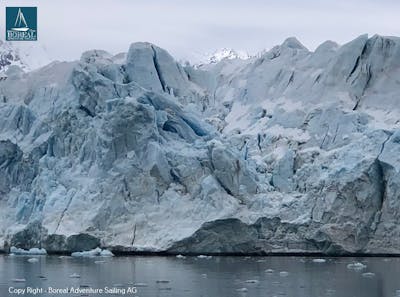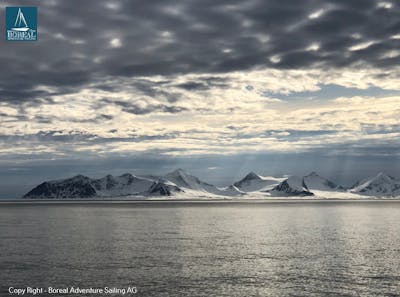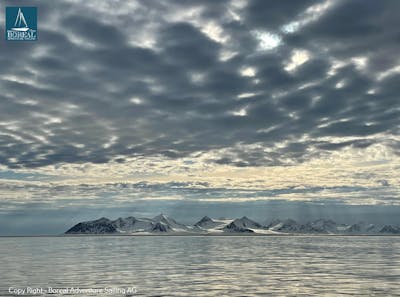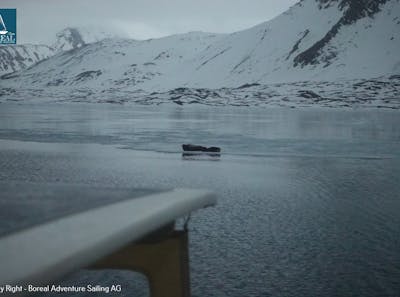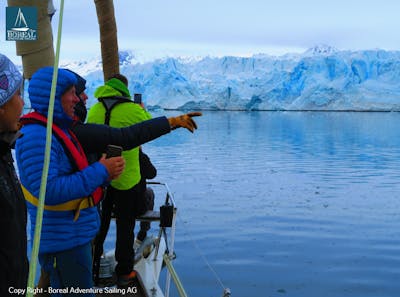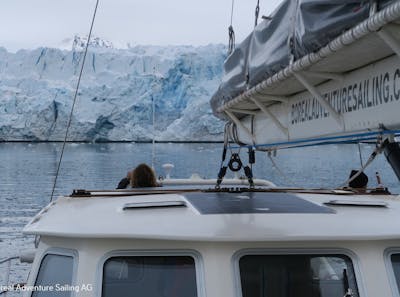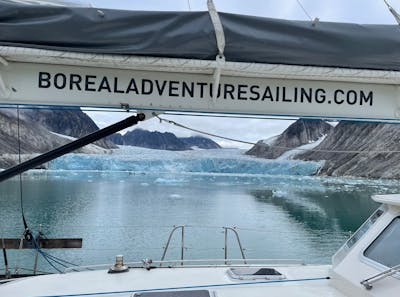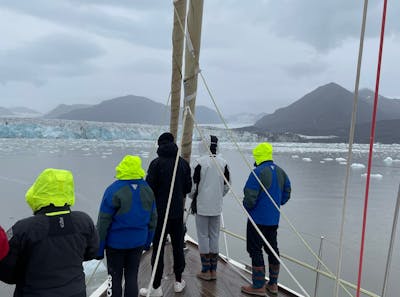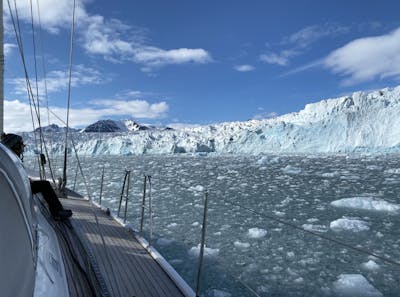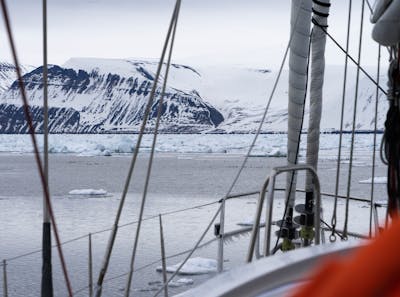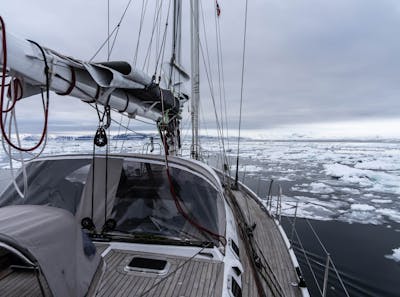SVALBARD
6'000€ - 10 DAYS
The archipelago of Svalbard is situated to the north of the Norwegian mainland, latitudes 74N to 81N, halfway between Norway and the North Pole, surrounded by the Greenland Sea and the Barents Sea. ”The northern end of the ocean” mentioned in the 12th century Icelandic chronicles, it is the nearest it is feasible to sail and land to the North Pole, the starting point for many of the greatest adventurers that raced to reach the northernmost point on Earth.
65% of the archipelago is covered by ice, a rugged cruising area, most spectacular and contrasting, offering expedition landings, hikes, kayaking, snow shoeing and bewildering Arctic landscape and fauna: Svalbard has more than 3’000 Polar bears (for fewer than 3’000 inhabitants).
Departures: |
| ||||||||||||||||||||||||||||||||||||
Embark: | Longyearbyen | ||||||||||||||||||||||||||||||||||||
Disembark: | Longyearbyen | ||||||||||||||||||||||||||||||||||||
Guests: | 6 + 1 Guide | ||||||||||||||||||||||||||||||||||||
The archipelago of Svalbard is situated to the north of the Norwegian mainland, latitudes 74N to 81N, halfway between Norway and the North Pole, surrounded by the Greenland Sea and the Barents Sea. ”The northern end of the ocean” mentioned in the 12th century Icelandic chronicles, it is the nearest it is feasible to sail and land to the North Pole, the starting point for many of the greatest adventurers that raced to reach the northernmost point on Earth.
65% of the archipelago is covered by ice, a rugged cruising area, most spectacular and contrasting, offering expedition landings, hikes, kayaking, snow shoeing and bewildering Arctic landscape and fauna: Svalbard has more than 3’000 Polar bears (for fewer than 3’000 inhabitants).
From Longyearbyen (the northernmost inhabited settlement on the planet), there are no roads connections to the fjords that are the keepers of our preferred exploration areas.
Fauna in the Svalbard is most protected, with 20 natural parcs the home of Arctic wildlife. Gliding silently over the ocean on our sailboat we will approach wildlife unobtrusively, crossing paths with many bird species that migrate in the late spring and summer to breed (little auk, guillemot, puffin, Arctic tern, skua, northern fulmar, black legged kittiwakes, glaucus and ivory gulls, barnacle and brent geese), walruses, bearded seals, whales, deer, polar foxes and with the imposing polar bear.
Svalbard’s diversity of exposed geology is a dream for geologists and lovers of nature. As the Cruise Handbook for Svalbard puts it “No other place in Northern Europe displays such diversity of geological formations and no other place has so many geological eras exposed in outcrops”.
Combined with the archipelago’s fascinating history of polar explorers and cultural heritage from the coal mining, hunting and whaling eras, we are in front of an endless choice of anchorages and landings.
You can leave your watch in your cabin. North of the Arctic Circle the day has no beginning or end. The Midnight Sun brings out magical colors in the surrounding landscape. The soft rays of the low-hanging sun bathe it all in a wonderful palette of pink, purple, yellow, and orange and create unforgettable memories.
Longyearbyen
Getting to Longyearbyen (founded in 1909 by the Arctic Coal Company of Boston, called after its co-owner John Munro Longyear) is straightforward with multiple daily flights both for Tromsø and Longyearbyen to list of connecting airports from there you will be embarking into an Arctic sailing that requires genuinely solid and experienced team of skipper, professional guide, and sturdy, adapted sailboat as well as a diligent onboard and onshore safety protocols.
Isfjord
Sailing out of Longyearbyen and into the Isfjord, a system of multiple fjord branches and pyramid shaped mountains coming down to the water, we have a choice of fjords and anchorages such as Grønfjord, Billefjord, Trygghamna. We can visit Barentsburg (only Russian settlement since the closure of Pyramiden), Finnset (site of a former Norwegian whaling station), Pyramiden (a ghost USSR settlement, abandoned in 30 minutes, perfectly preserved, inhabited by two Russian caretakers) or Alkhornet’s WWII observation center as well interesting geological formations.
Prins Karls Forland - Forlandsund
“Forlandet” as it is referred to locally, named after son of James I of England. Whalers used to call it Foul Sound due to the Forlandslevet shallows. The Spitsbergen coast is lined with mountains and glaciers we can approach under summer weather conditions. There are many anchorages and landings to choose from including, in S-N, direction Farmhamna (with interesting geology, old whaling station), Eidembukta (with rich birdlife), Brucebukta and Fersvassbukta (common sighting of Walruses), Engelsbukta (with the Comfortlessbreen glacier).
Kongsfjord, Krossfjord and Magdalenenfjord
North East of Forlandsund, Kongsfjord and Krossfjord have striking scenery, dominated by peaks and glaciers running into the sea. Numerous anchorage options await us, such as NY Alesund (former mining center turned polar scientific research center, the site of Amundsen’s zeppelin 1926 north pole flight… and the world’s most northerly pub), Peirsonhamna (offering nice walks and flora), Blomstrandhamna (for breathtaking views of glaciers), Møllerfjord (surrounded by mountains and glaciers), Signehamna (walking with flora and birdlife)….
NW Spitsberg and Islands
Covered by the Nordwest-Spitsbergen National Park, the area covers the NW tip of Spitsberg and nearby islands of Danskøya, Amsterdamøya and the Norskøya.
It is rich in fauna, with seabirds, reindeer, walruses and polar bear. The region also hosts the northernmost hot springs on earth, the Troll and Jotun. There can be found the remains of whaling stations and graves from the 17th century and the debris of several early Arctic expeditions. With VARUNA we have a choice of anchorages, Bjørnhamna, Virgohamna and Kobbefjord (Danskøya), Smeerenburgbukta, Norskøysund to discover it all in this remote area on the edge of latitude 80N…
N Coast and crossing to the Nordaustland
The North coast is dominated by large, beautiful fjords that cut 35 nm inland: Liefdefjord and Woodfjord offer multiple anchorages where to observe the fauna (Svalbard reindeer, walrus reservation of Moffen island), hot springs and extinct volcano.
From the N Coast we will be crossing latitude 80N and making our heading to the Nordaustland (the northeast land), which is close to half the size of Spitsbergen. Depending on weather and icepack, we will be selecting our anchorages in the Murchisonfjord (sighting walruses and Polar bears) or the Sjuøyane group of islands.
DAY 1
- Arrival to airport and transportation to the sailboat.
- Welcome by the crew, checking and storage of gear, accommodation in cabins.
- Review of the boat, safety briefings by skipper and guide.
- Setting sail towards the initial anchorage, first dinner onboard.
DAY 2 - 9
- Sailing and exploration in the designated areas.
- We will endeavor to maximize time spent onshore and in explorations with our dinghy. Depending on weather conditions and the specific area, we may select more than one landing spot on given days.
DAY 10
- Arrival to port in the morning.
- Disembarking and transportation to Airport / Hotel.
- Stay onboard the ship for the specified voyage duration
- Professional skipper, chef and professional guide
- Standard offshore lifejacket and lifeline
- Shore landings and tours with the dinghy
- Bedding and towels
- Onboard food (breakfast, lunch, snacks, dinner), hot beverages and non-alcoholic beverages
- Fuel and all port dues
- Air fares to and from departure point.
- Insurance (personal medical, travel, cancellation, etc)
- Alcoholic beverages.
- Food and beverages on the day of arrival until boarding
- Ski, trekking or other outdoor activity gear.
- Voice and data communication using onboard equipment.
- Entry fees into parks, museums, etc

